ratio
illustrating the ratio of metal in ore within a series of small furniture pieces
year 2019/2020
category Products & Furniture
commissioned by
in collaboration with
Beno Ogrin (stonemason)
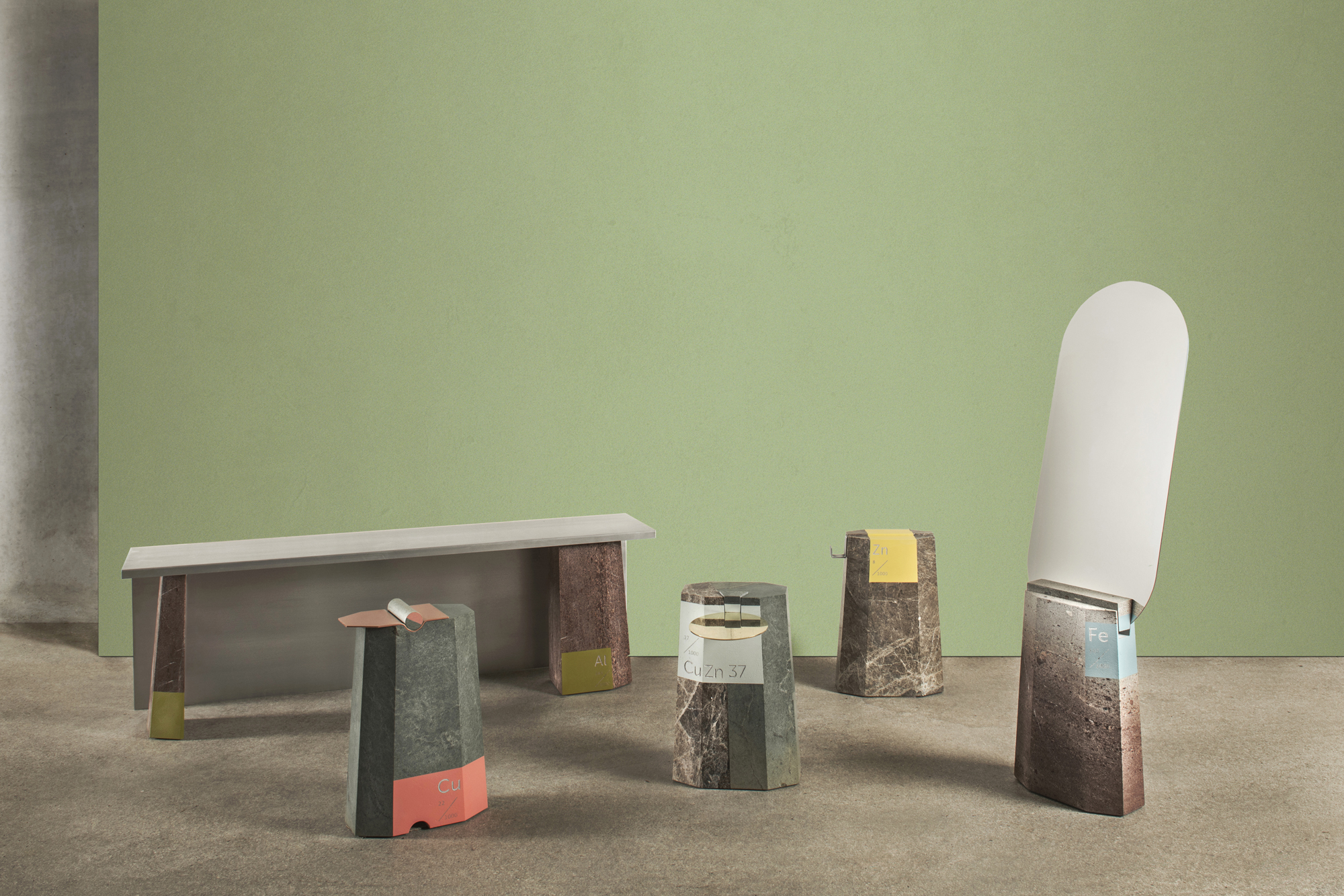
ratio illustrates the amount of metal in ore – the series of small furniture pieces show the ratio of (first) hidden metal in specific raw stones.
The project uses the craft of a stonemason to put a focus on the sourcing and exploitation of metals from metal ores and their use in our everyday life. Stone is quarried in order to construct buildings and monuments. It is cut up and polished to make wonderful statues, objects and interior finishes, but stone is also extracted, mined, pulverised or burnt in order to extract minerals of many kinds to produce a great amount of the objects that populate our daily lives. Nevertheless, we hardly think of stone when we touch iron, unwrap food from aluminium foil or hold a battery in our hands.
The Design project ratio embraces crafts in order to tell a story about stone and its hidden metallic mineral components. Working together with stonemason Beno Ogrin, five objects were realized: three sidetables with small functional elements like a hook out of zinc, a tray out of brass and a tray out of copper, a standing stainless steel mirror and an aluminium bench. The pieces of furniture reveal the proportion of metal contained in each specific metal ore by combining it with its metallic equivalent in the form of metal sheeting. The size of the metal sheet with 3 mm in thickness is always as big as the resulting material one would get when theoretically processing the stone into the metal. Information and Data in regards to local ores and their estimated specific percentages of metal content was kindly provided by the geological institute Ljubljana. Each object consists of two main parts – the metal ore and the amount of metal which could be extracted from it. A third part, a cut-out volume of the stone, fixes the metal elements in its place. It emphasize the proportion of the metal to the stone as it equals the volume of the metal sheet that can be extracted from this specific rock.
Craftsmanship brings us closer to a material and what it actually takes to turn it into an object. To turn a rough stone into a piece of furniture requires many refined production steps by a skilled stonemason. ratio pushes this aspect of transparency even further by revealing more aspects of the use of stone in our cultures. By making data tangible, the project highlights the fact that it takes a great amount of stone (as well as additional other materials) to turn it into a pure metal. Extracting metals requires a big amount of energy and changes a lot of landscapes. Thus, we as consumers should properly value and appreciate the things around us and choose wisely what we need and want.
The project was commissioned by MAO – museum of Architecture and Design Ljubljana for the Made in project: MadeIN: crafts and design narratives.
what we can not grow,
we have to mine*
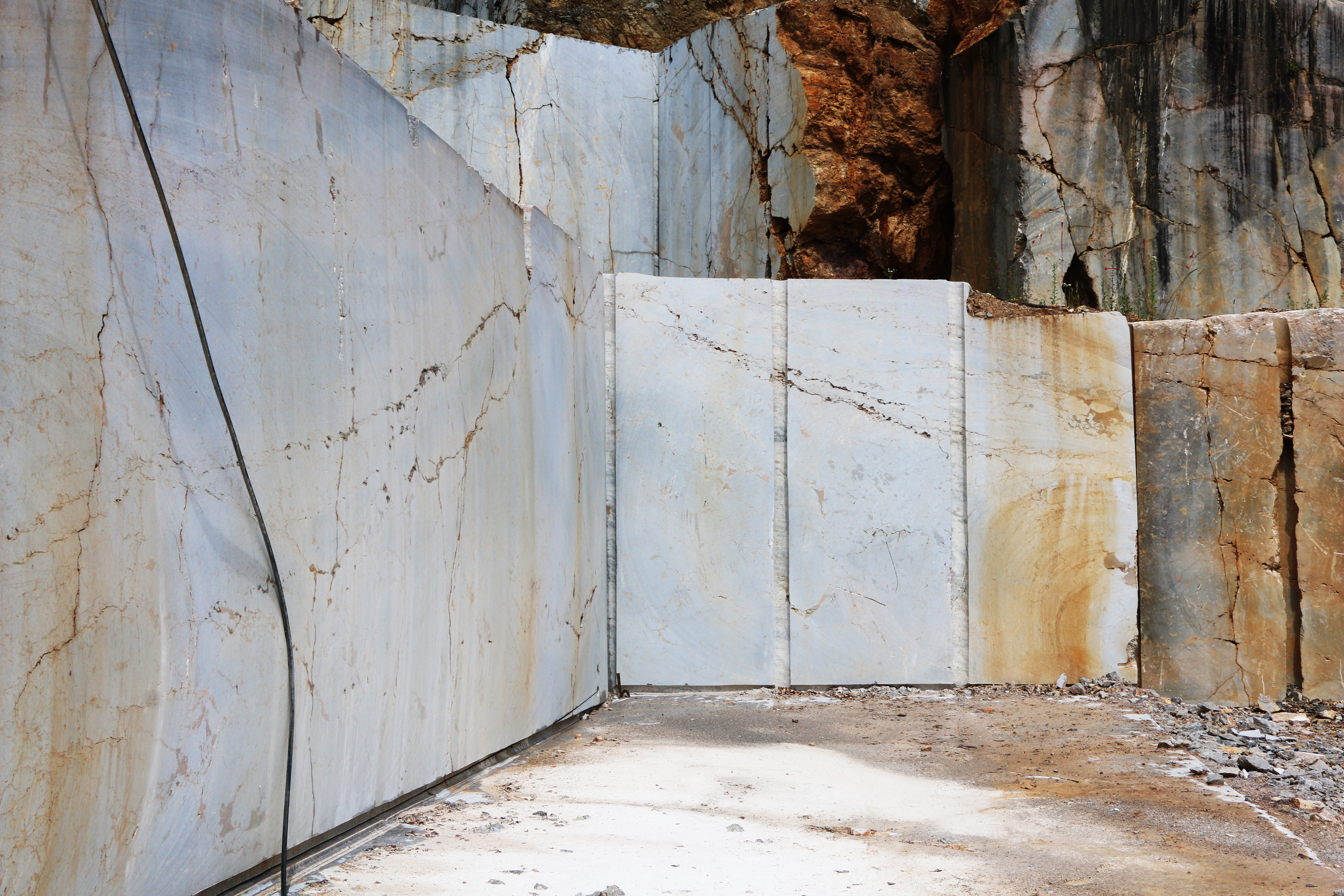
*anything we can’t grow, we have to extract from the Earth in one way or the other. This includes many materials that form things all around us like roads, bridges, cutlery, our smartphones up to tiny screws and batteries.

side table made from copper ore and copper, image credit: Jure Horvat
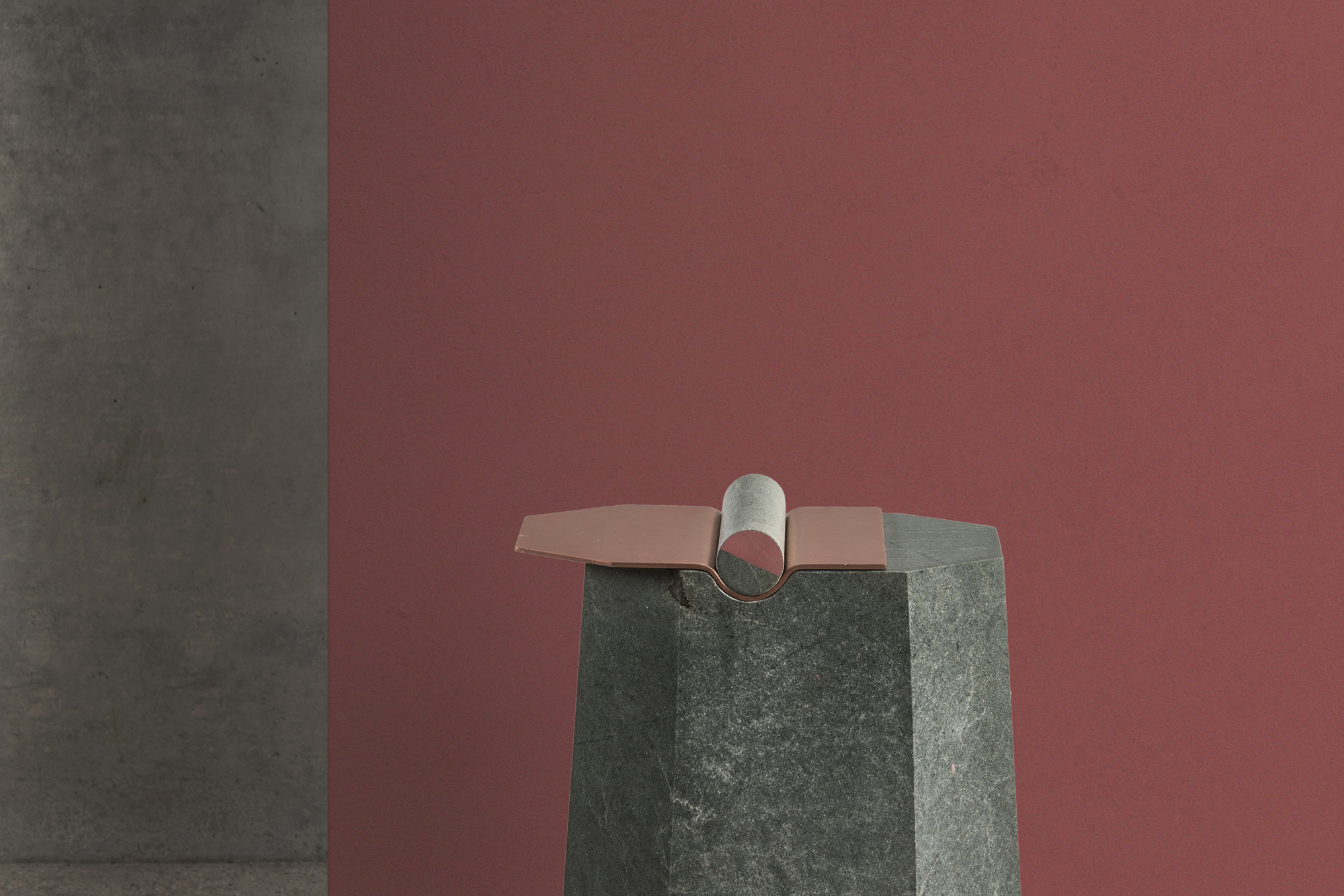
detail side table copper, image credit: Jure Horvat
Each object consists of two parts – the metal ore
and the amount of metal which could be extracted from it.
Information and Data in regards to local ores and their estimated specific percentages
of metal content was kindly provided by the geological institute Ljubljana.
It was a pleasure to listen to their insights into rocks, stones, ores and time.
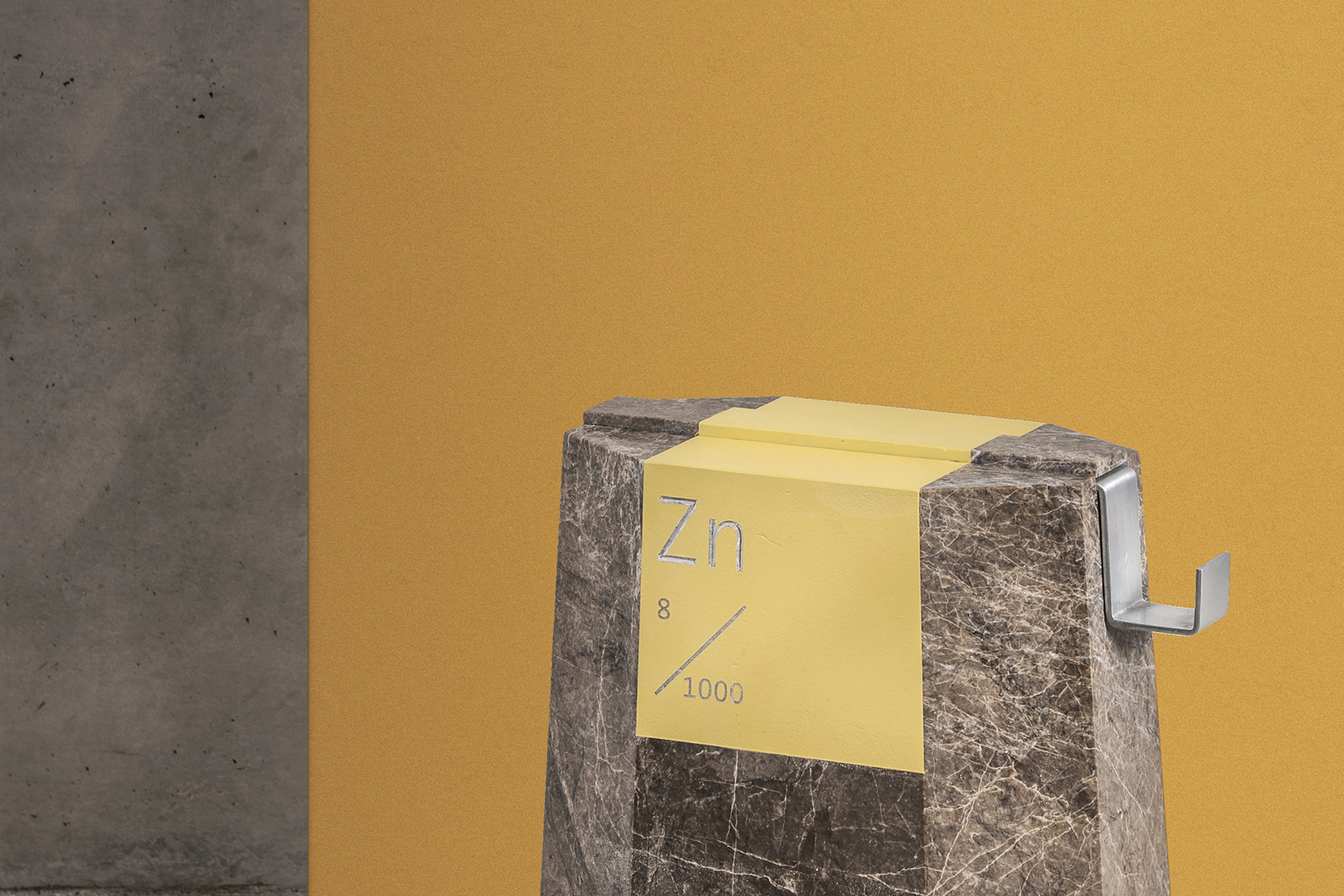
side table made from tin ore from Mežica mine and tin. 0,8% of a tin ore's weight is tin. image credit: Jure Horvat
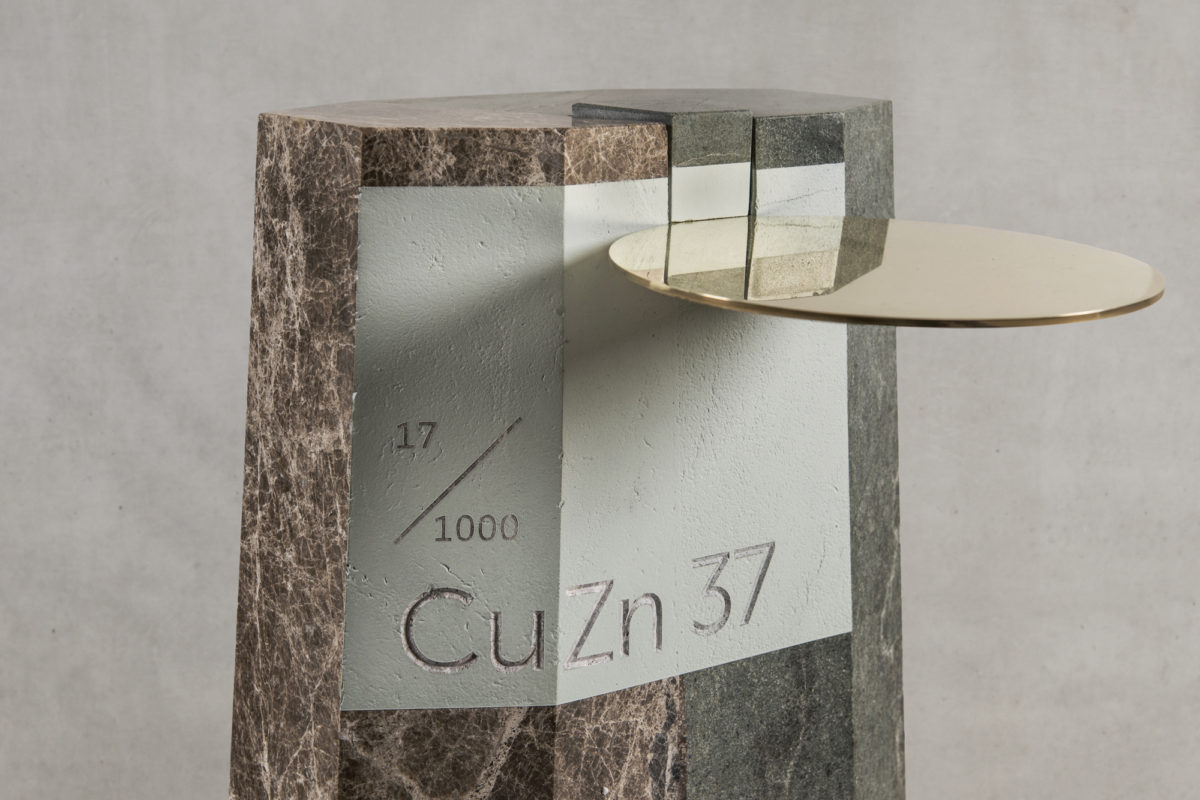
side table made from copper ore, tin ore and brass, image credit: Jure Horvat
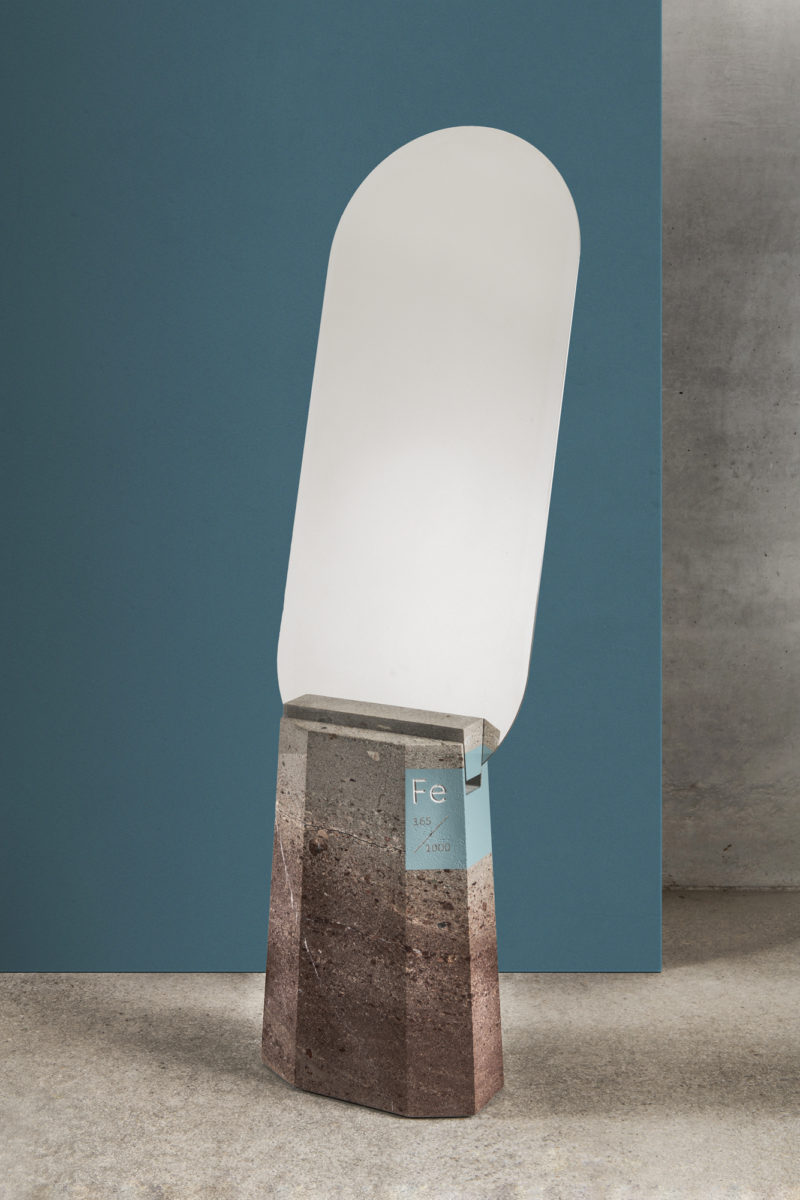
mirror made from iron ore and polished stainless steel, image credit: Jure Horvat
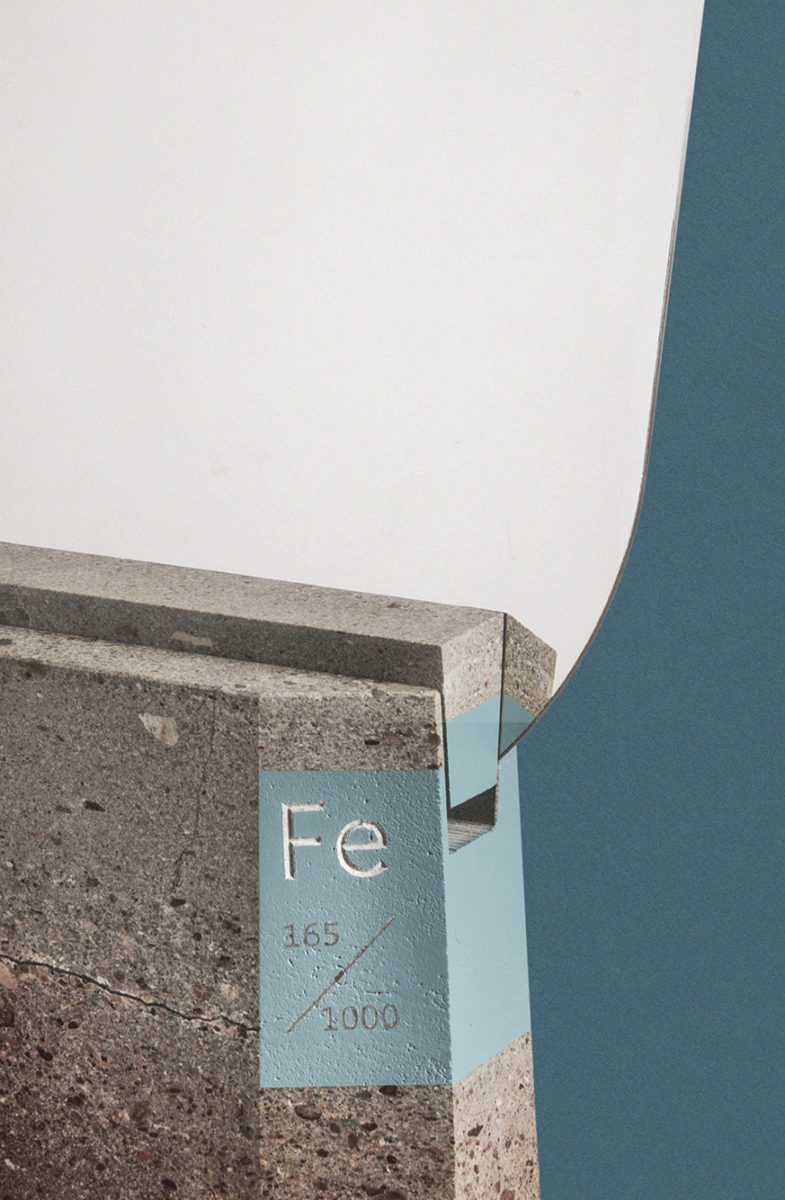
this slovenian bauxite contains 16,5% iron, image credit: Jure Horvat
In order to emphasize the proportion of the metal to the stone – each piece of ore contains a cut-out volume that equals the volume of the metal sheet that can be extracted from this specific rock.
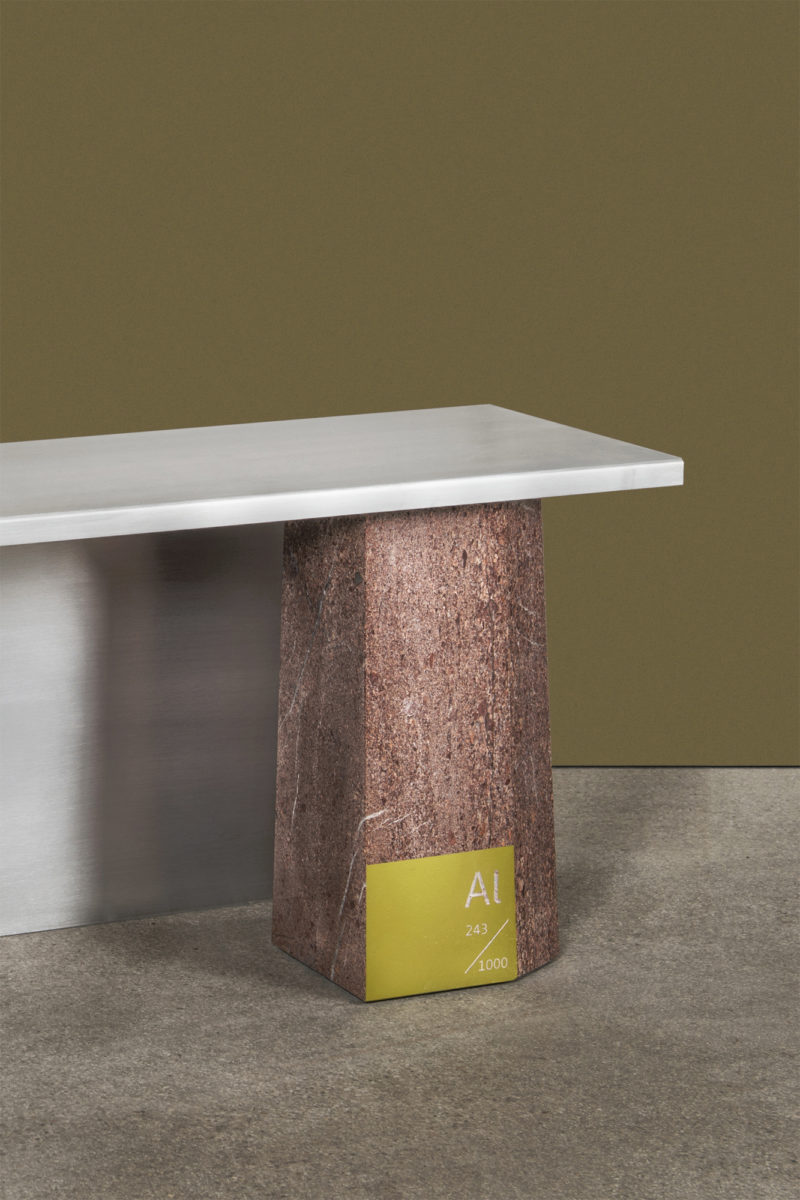
detail of the aluminium bench, made from bauxite and aluminium - 24,3% of the ore's weight, image credit: Jure Horvat
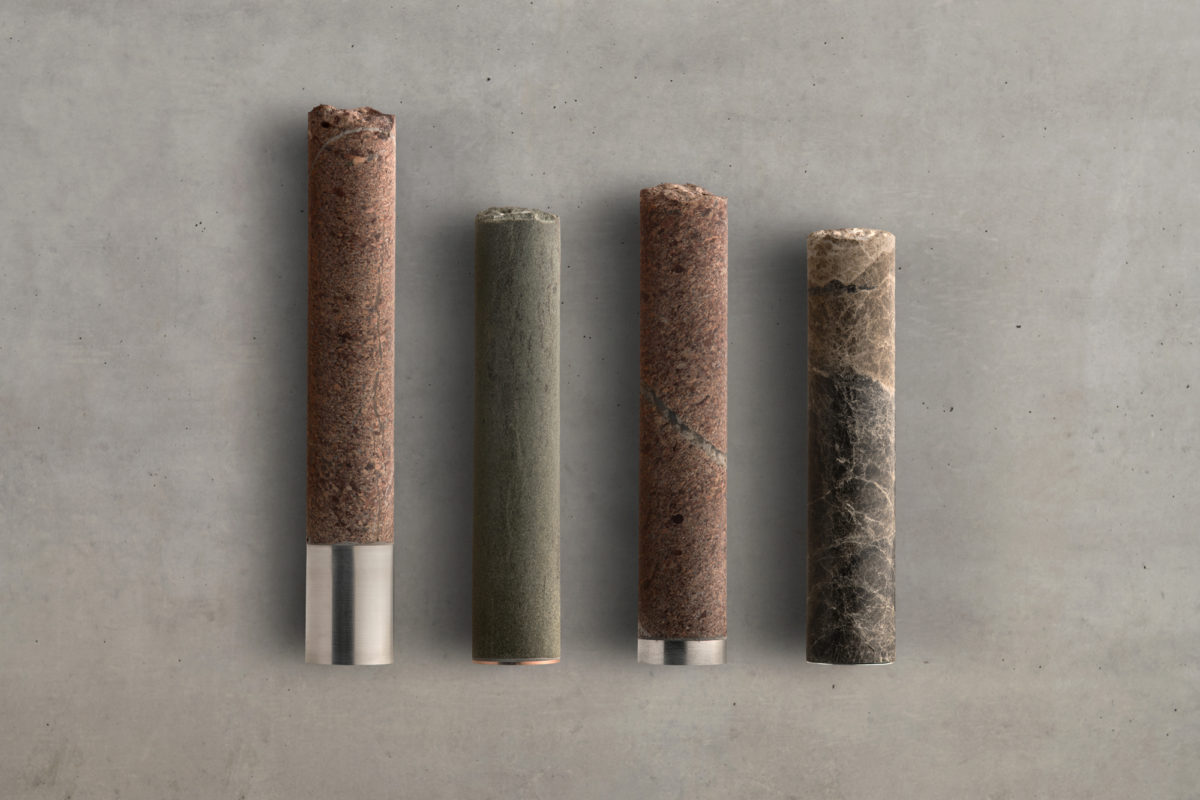
small display pieces show the ratio of metal within a specific stone, image credit: Jure Horvat

raw stones, image credit: Luka Karlin
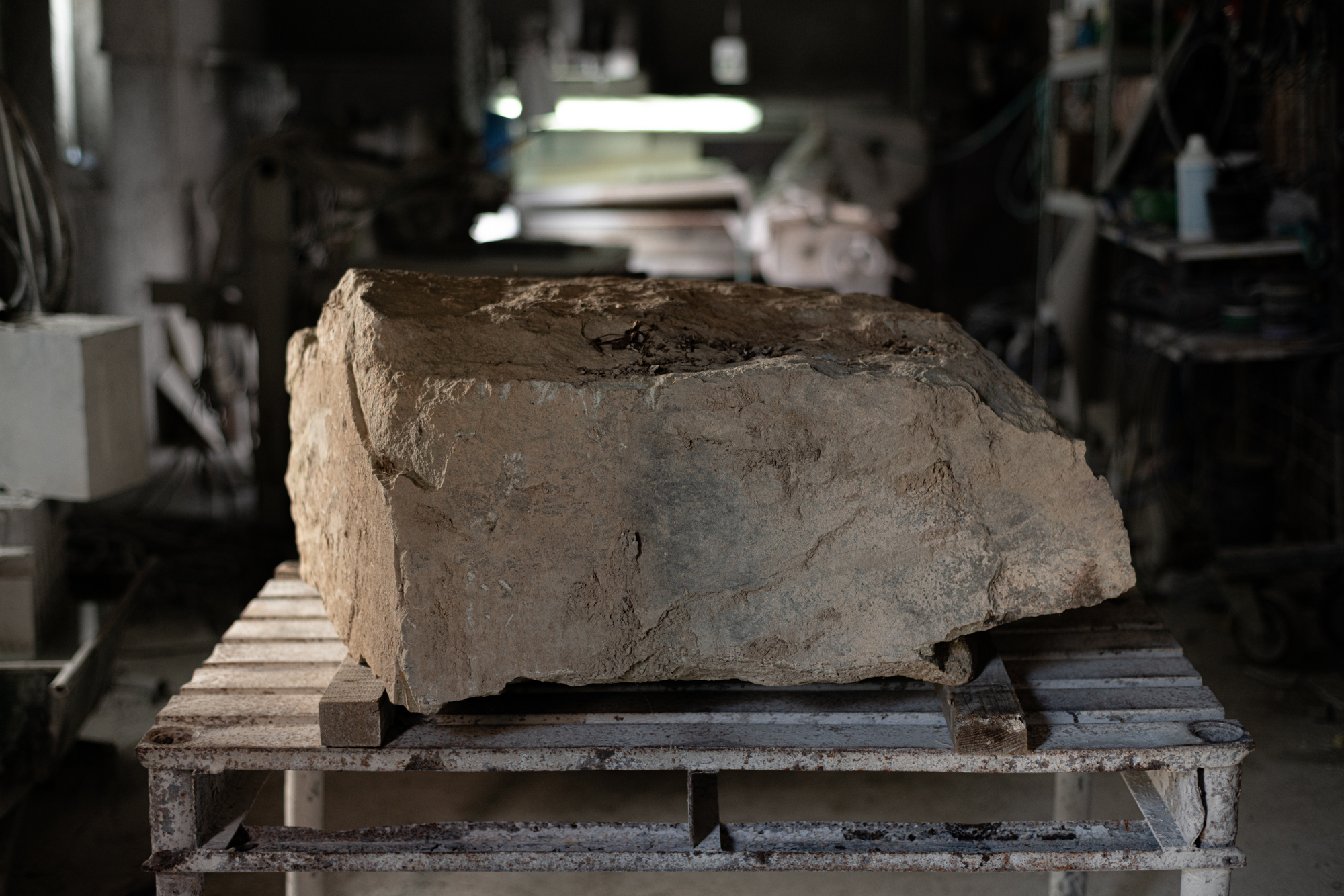
raw stone in Beno Ogrin's workshop, image credit: Luka Karlin
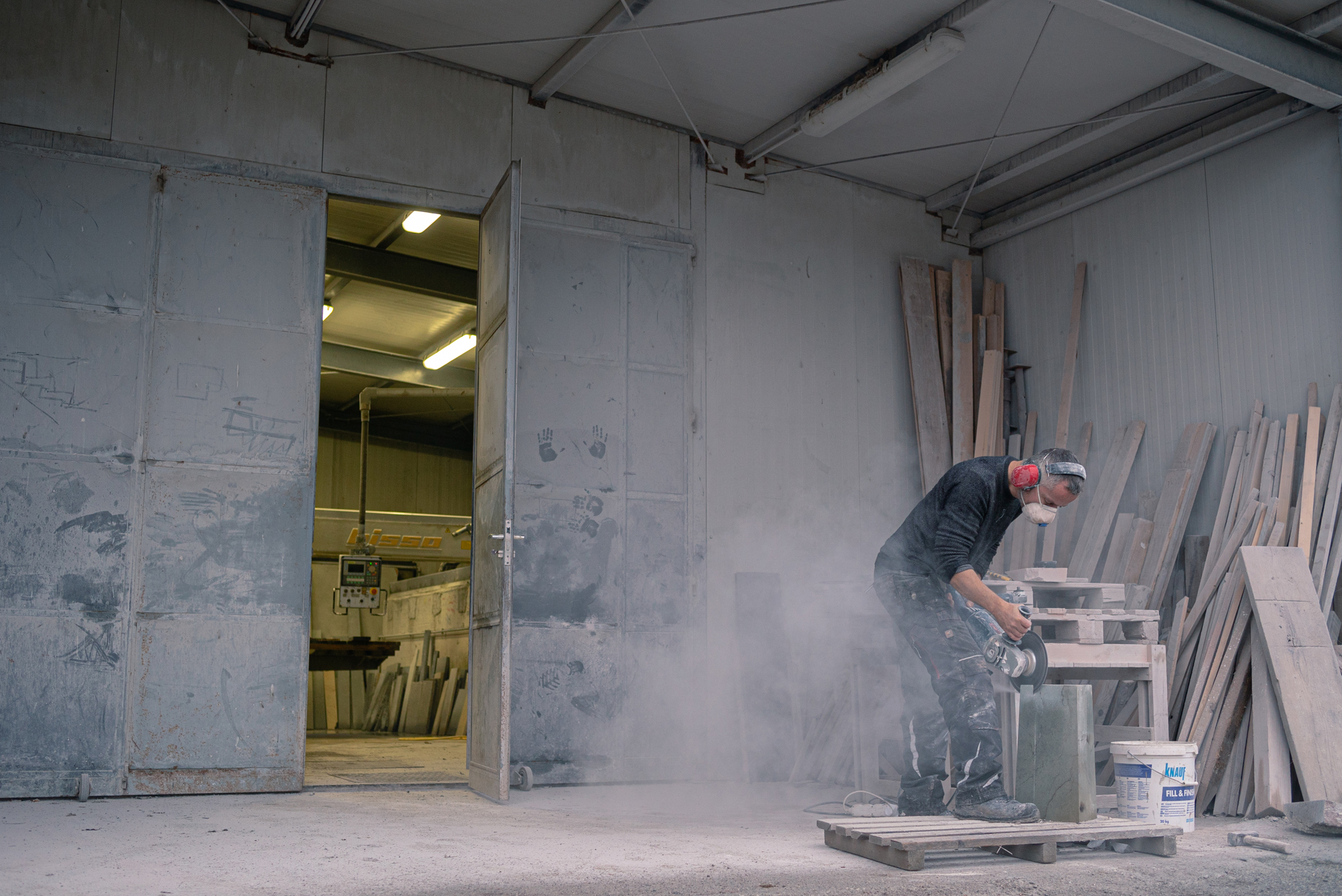
Beno Ogrin cutting a stone at his workshop, image credit: Luka Karlin
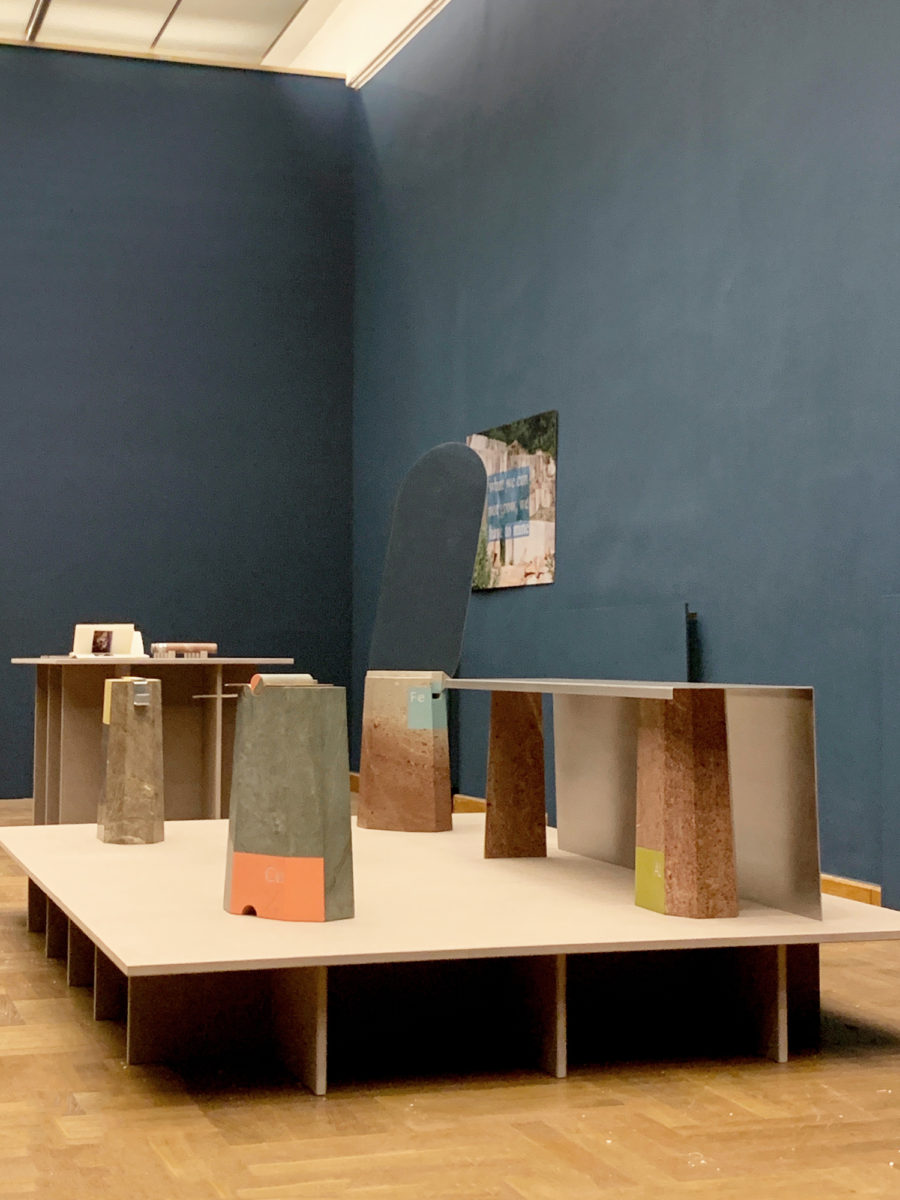
snapshot of the exhibition set up in the Museum of Arts and Crafts in Zagreb
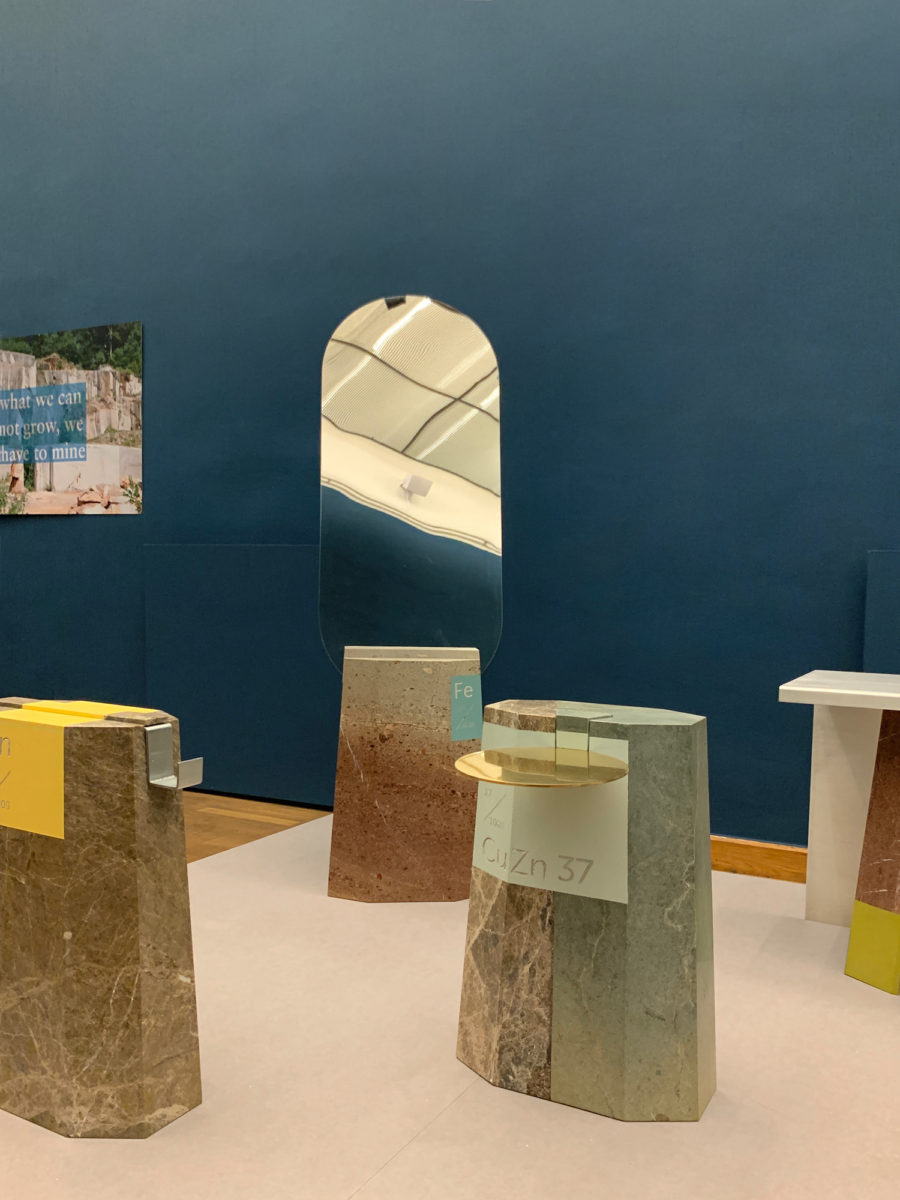

the final pieces are accompanied by small, thought-provoking books entitled "there is no small mine", "this used to be a stone", "from stone to object" and "nothing is ever lost"
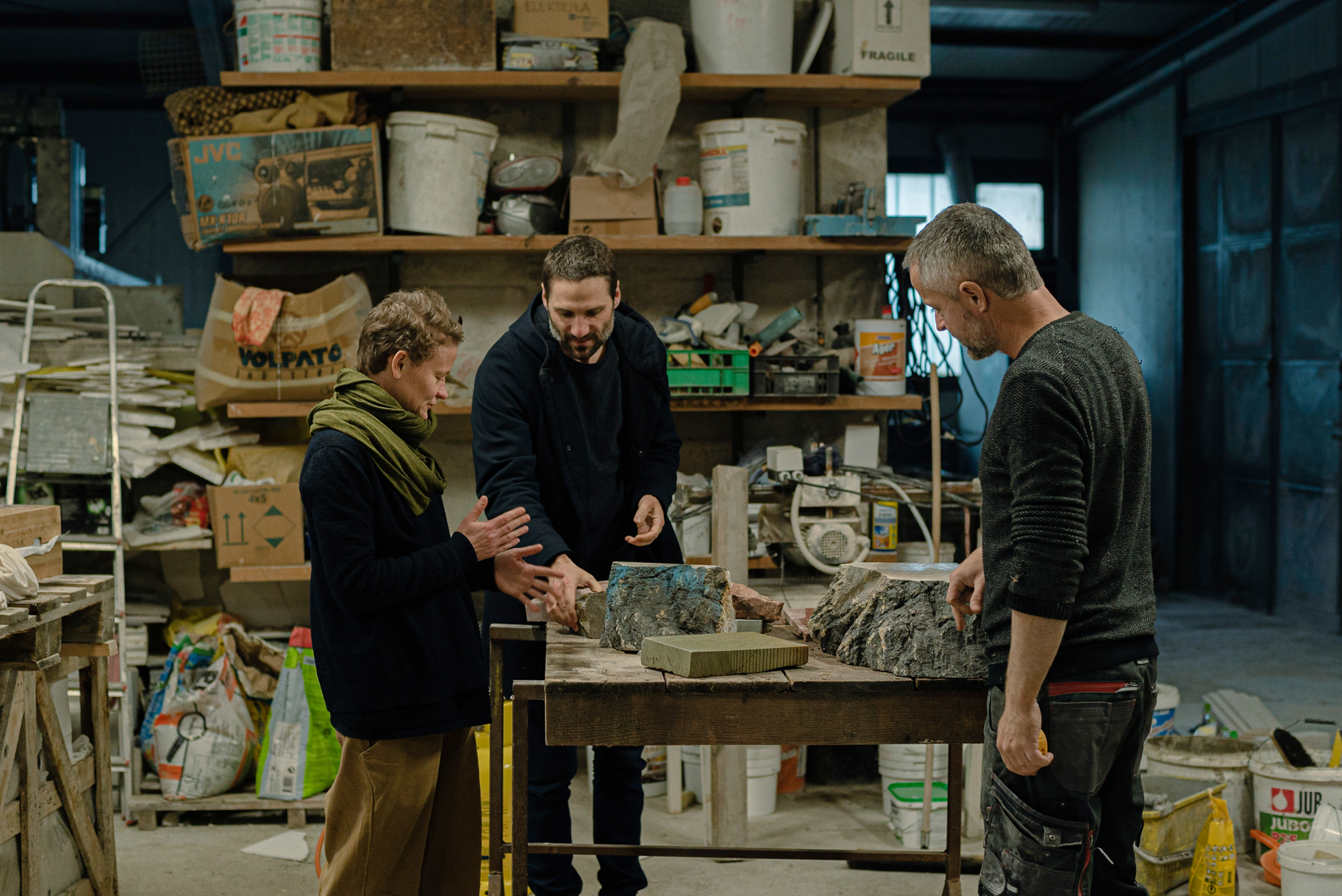
Katharina, Thomas and Beno discussing final details, image credit: Luka Karlin
-
material
zinc, stainless steel, copper, brass, aluminium, ores of various kinds (zinc ore, aluminium ore, copper ore & iron ore), lacquer
-
dimensions
aluminium bench: 142 x 30 x 45 cm
copper side table: 32 x 17 x 45 cm
zinc side table with hook: 32 x 17 x 45 cm
brass side table: 30 x 35 x45 cm
iron mirror: 30 x 17 x 122 cm -
curated by
Maja Vardjan and Cvetka Požar
-
stonemason
Beno Ogrin
-
partnering organisations
/ MadeIN format
Museum of Arts and Crafts, OAZA (Croatia), Museum of Architecture and Design (Slovenia), Werkraum Bregenzerwald (Austria), Nova Iskra, Mikser (Serbia)
-
team
Katharina Mischer, Thomas Traxler, Monja Hirscher, Elisa Polner